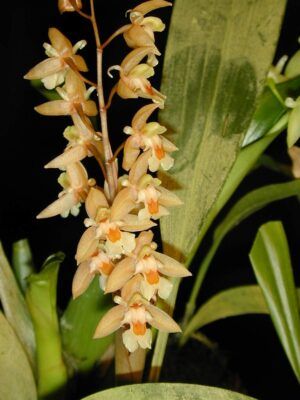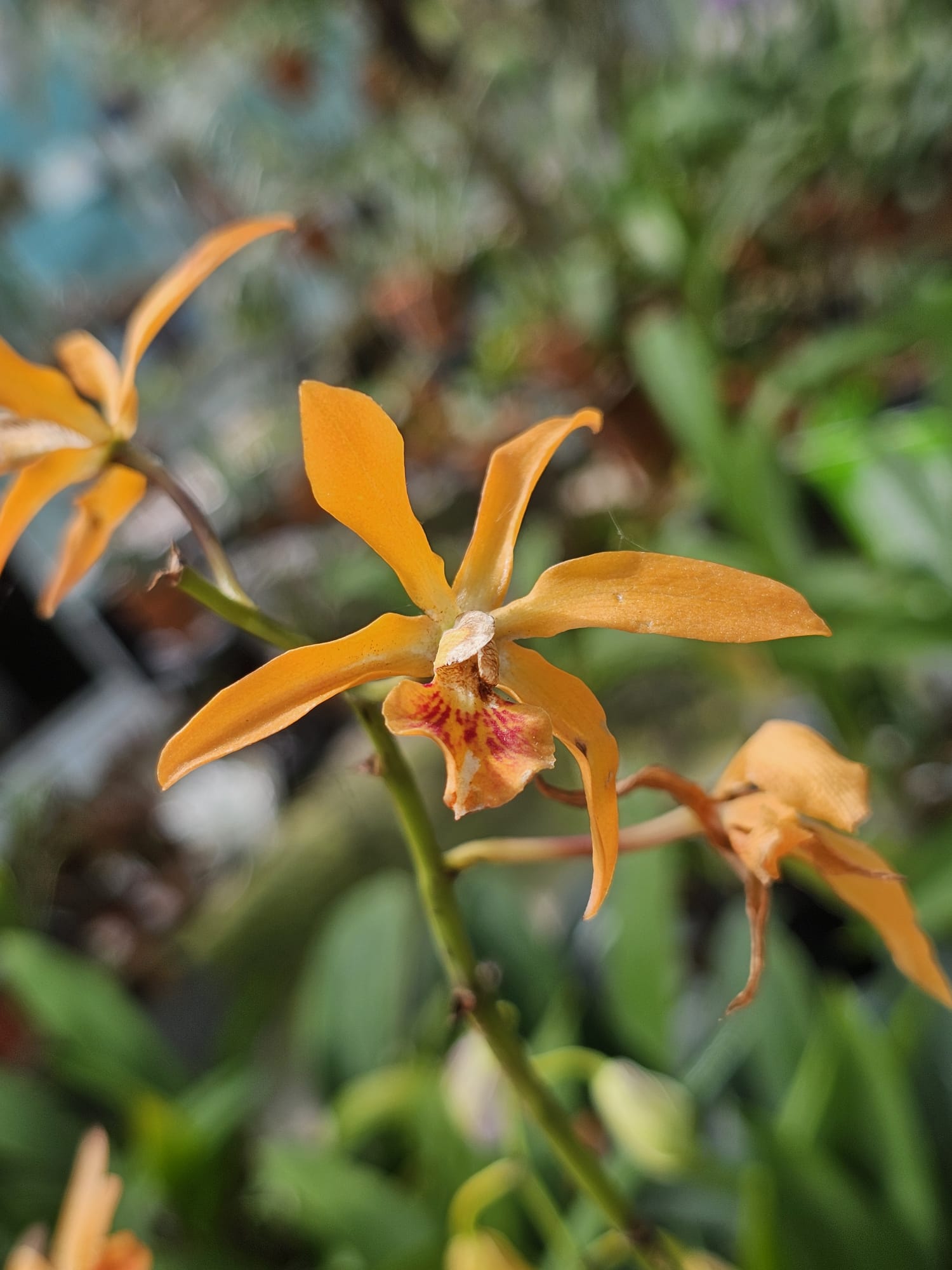Description
Peristeria elata: The Enchanting Orchid of the Holy Spirit for Your Collection
Description:
Peristeria elata, also known as the Holy Spirit Orchid, May Flower, or Dove Orchid, is a stunning epiphytic orchid native to Central and South America. Appreciated for its fragrant white flowers resembling the shape of a dove in flight, this rare and exotic orchid is a collector’s item and a symbol of peace and spirituality.
Characteristics:
- Size: Medium to large size, with adult plants reaching an average height of 50 to 100 cm, including the flower spike.
- Light: Intense diffused light. Prefers filtered sunlight throughout the day. Avoid excessive direct sunlight.
- Temperature: Warm temperatures during the day (between 20°C and 28°C) and mild at night (between 15°C and 18°C).
- Humidity: High humidity (between 70% and 80%).
- Watering: Water moderately when the substrate is nearly dry. Allow the top of the substrate to dry slightly between waterings. Avoid overwatering.
- Fertilization: Use a specific orchid fertilizer diluted every two weeks during the growing season (spring and summer).
- Flowering: Blooms in late spring and summer, producing long flower spikes with several fragrant white flowers in the characteristic shape of a dove.
Care:
- Peristeria elata needs a pot with good drainage. Use specific orchid substrate, such as pine bark, charcoal, or a suitable commercial mix.
- Provide intense diffused light by filtering direct sunlight with translucent curtains. Filtered sunlight throughout the day is beneficial for flowering.
- Water according to the plant’s needs, monitoring the substrate. Avoid waterlogging and allow partial drying between waterings.
- High humidity is crucial for this orchid. Use humidifiers, vaporization trays, or group plants to increase ambient humidity, especially in dry climates.
- Fertilize during the growing season to stimulate abundant flowering.
Tips:
- Peristeria elata is recommended for intermediate orchid growers due to its specific humidity requirements.
- Mounting on slabs is an alternative cultivation method that may be interesting for this species, provided that the ambient humidity is adequate.
- Rotate the plant pot regularly to ensure all sides receive sufficient light and grow evenly.
- After flowering, trim the flower spike just above the last node with flowers to encourage the sprouting of new spikes.
- Watch for signs of pests or diseases such as scale insects, aphids, or leaf spots. Take corrective measures as soon as you identify them.






Reviews
There are no reviews yet